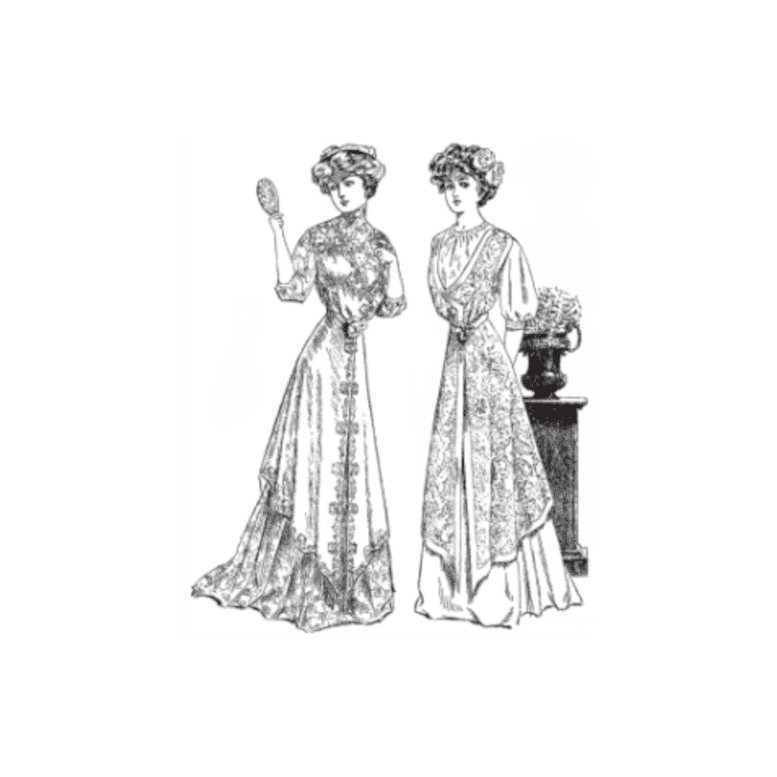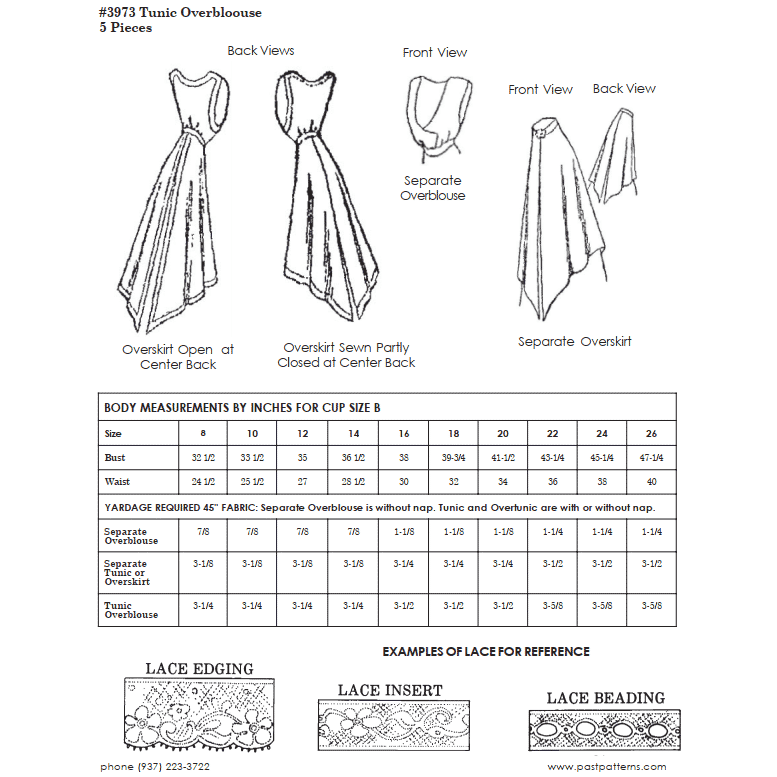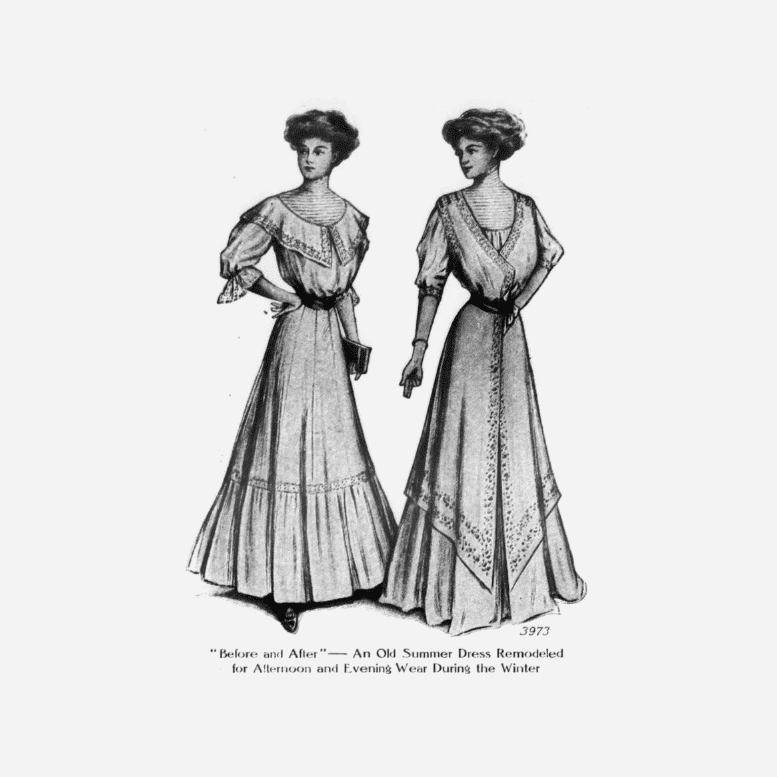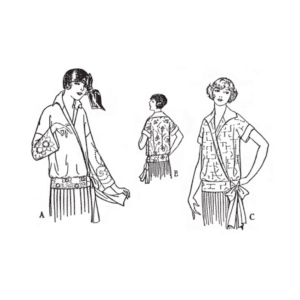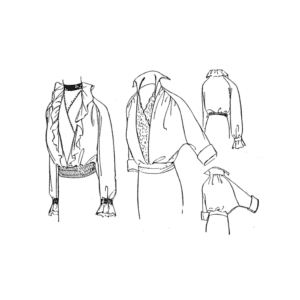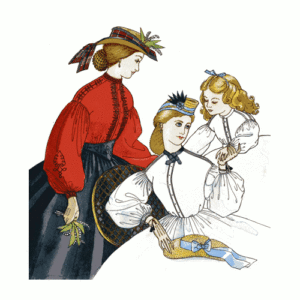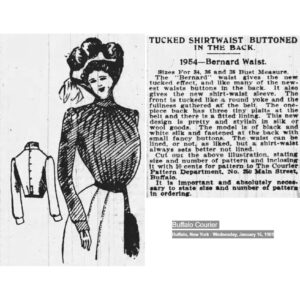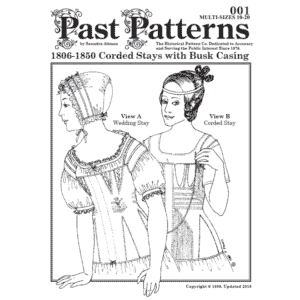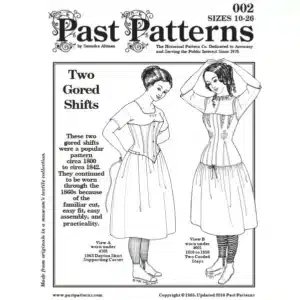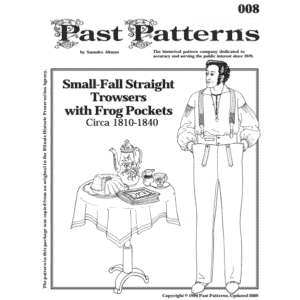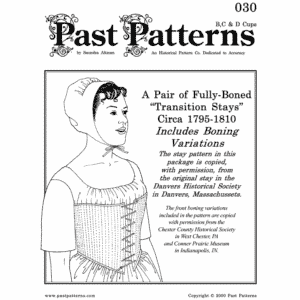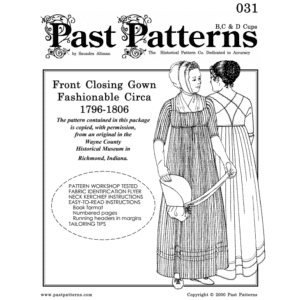Early 1900s Tunic Overblouse Sewing Pattern | Past Patterns 3973
$19.00
Early 1900s Tunic Overblouse Sewing Pattern by Past Patterns 3973 is adapted from a 1908 Ladies’ Home Journal design. Features three variations with bust cup options B–D and sizes 8–26 (Bust 32½–48″). A versatile Edwardian layer ideal for historical reenactment and elegant period sewing.
99 in stock
Get Free Shipping
On all US Orders over $50!
$19.00
Early 1900s Tunic Overblouse Sewing Pattern by Past Patterns 3973 is adapted from a 1908 Ladies’ Home Journal design. Features three variations with bust cup options B–D and sizes 8–26 (Bust 32½–48″). A versatile Edwardian layer ideal for historical reenactment and elegant period sewing.
99 in stock
Get Free Shipping
On all US Orders over $50!
All of our patterns tell a story.
Why Choose This Pattern?
Early 1900s Tunic Overblouse Sewing Pattern – Historic Elegance for Modern Makers
This Early 1900s Tunic Overblouse Sewing Pattern was originally published by The Ladies' Home Journal magazine and is faithfully reproduced by Past Patterns to preserve the unique silhouette of the Edwardian era. Pattern 3973 invites you to recreate a versatile and elegant overblouse worn during the transitional years between the Edwardian period and the 1910s.
Historical Context of the Early 1900s Tunic Overblouse
Pattern 3973 was featured in the September 1908 issue of The Ladies' Home Journal, page 76, in the article “For The Girl Who Makes Her Own Clothes.” This publication encouraged self-sufficiency and creativity among women of the time. The article emphasizes the need for lighter garments suitable for afternoon and evening wear, specifically recommending this tunic overblouse for winter occasions. Its suggested styling—with a silk crepon over a matching skirt or a remodeled dress—was fashionable and affordable for the everyday Edwardian woman.
The original description reads: “Ladies' Tunic Overblouse, Closed in the front; consisting of an overblouse, or jumper, joined to a four-gored tunic or overskirt, with [both] regulation or slightly Empire back.” The tunic and overblouse elements could also be worn separately, offering flexibility and extended use of the garment.
What You Can Make with The Early 1900s Tunic Overblouse Sewing Pattern
- Three distinct tunic overblouse variations
- Optional bound edges with buttons at the shoulders
- Waistline rosette detail included in both views
What’s Included in Past Patterns 3973
- Five hand-drafted pattern pieces on durable 20 lb. paper (36" wide)
- Design options for bust cups B, C & D
- Sizing from 8–26 (Bust 32½"–48", Waist 24½"–40", Hips 34½"–50")
- Copy of the original Ladies' Home Journal layout
- Period lace application tips
- Material layout illustrations
- Instructions for full bust adjustment and custom fitting
Recommended Fabrics & Yardage for the Early 1900s Tunic Overblouse Sewing Pattern
Suggested period-appropriate fabrics include bordered batiste, silk, fine cotton, and lace. Saundra Altman, founder of Past Patterns and a fashion historian, noted that bordered fabrics or lace insertions would have added refinement to this style during its time.
Fabric requirements (based on 45" wide material):
- Sizes 8–14: 3¼ yards
- Sizes 16–20: 3½ yards
- Sizes 22–26: 3⅝ yards
Skill Level – Intermediate (3/5)
Difficulty rating: 3 out of 5. Best suited for intermediate sewists with experience in garment assembly, working with curved seams, and making fitting adjustments. The overblouse features inset shaping and optional bound trim and buttons at the shoulders, which may require careful alignment and finishing. Full bust adjustment instructions are included to support proper fit for D-cup sizes.
Why Choose Past Patterns?
Past Patterns is proud to bring you historically accurate reproductions that honor original garment design while accommodating modern body sizes. All printed patterns arrive folded in reusable packaging with artwork, measurements, and garment summaries included on the cover. Instructions are clear, detailed, and based on historical construction techniques.
Coordinates the Early 1900s Tunic Overblouse Sewing Pattern With Other Historical Designs
This tunic overblouse pairs beautifully with Edwardian slips, petticoats, and skirts, also offered in the Past Patterns catalog. It can also be styled for costume use in Edwardian reenactments, school plays, or museum exhibitions.
Order Information
- Includes printed pattern pieces, historical context, and illustrated layout
- Packaged in a reusable plastic sleeve for safe storage
- Domestic and international shipping available
- Combined shipping discounts automatically apply
Also available as a digital download here: Early 1900s Tunic Overblouse Downloads
Copyright Past Patterns 1979–2025. All rights reserved.
Additional information
| Weight | 8 oz |
|---|---|
| Dimensions | 13 × 10 × 2 in |
Sizing Information
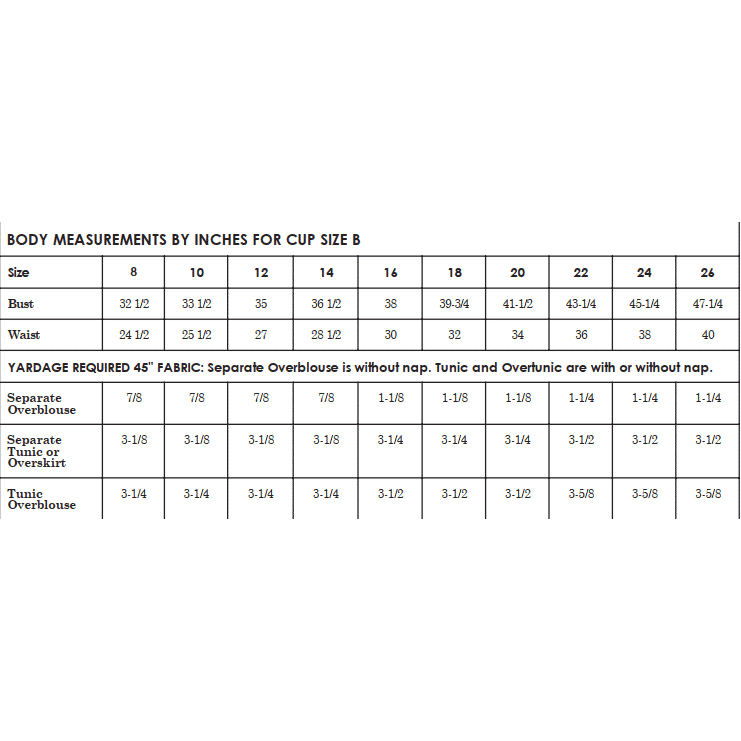
(Metric size sheet opens as a PDF in a new browser tab)
Preferred Vendors
Past Patterns works with vendors from all over the world to help us replicate the amazing articles of clothing. Now you can too!
Visit our preferred vendors page to order directly from some of our top recommended suppliers.
FAQ's
(Frequently asked questions)
Why are both Trowsers and Trousers listed on site?
Over the last 200 years, much like the human body, our style of language has changed. For vintage patterns, we attempt to use the language of the day where possible.
Can you grade (edit) a Vintage Revival pattern for my size?
please contact us with the specific pattern number and the specifications you require. We have staff available for this for an additional fee.
What sizes do Past Patterns patterns come in?
Our patterns, with some exceptions, are manufactured in sizes 8 through 26 for women and sizes 34 through 54 for men. Most patterns are multi-sized. For a complete listing of measurements in inches see the size chart.
Do you have vintage patterns (manufactured prior to 1950) that you want to sell?
we are always on the lookout for original, American designed, vintage patterns especially for categories outside of current items. We are interested if you have 1 pattern or 1000 patterns. Give us a call to discuss.
Why is my pattern size different from my off the rack dress size?
We use the U. S. Board of Standard Measurements to size our patterns. The ready made clothing manufacturers have their own set of sizes developed from their own statistics. For a complete listing of measurements in inches see the size chart.
How are the patterns packaged?
We package our patterns in two forms: Bond Paper and Tissue. Except for the Tissue patterns, each is slipped into a reusable plastic sleeve. Many contain documentation in the form of Historical Notes or the printer ie., Butterick. Because the patterns are printed in house to order, they can take from three to seven days. Tissue patterns, which are printed out of house, are available to ship immediately.
What does a Corset Kit contain in addition to the Corset pattern?
In addition to the pattern, the kits contain everything you need to make the corset except the thread. The kits contain, according to their type, fabric and lining, stays, clasp or busk board, back lacing, tape for finishing the edges, trim lace, ribbon, leather, tin stock, waist tape, punch and setter, eyelets, marking pencils, cording, reed and a loop turner.
Need a pattern in your language?
we can translate our instructions into just about any language
Have an old and incomplete Past Patterns item. What can I do?
The answer depends on if the pattern is still in production or not. If it is, please mail us the old pattern and we will ship you a copy of the latest pattern for a minimal fee along with normal shipping charges. If the item is no longer in production, we would need to know exactly what you have to determine the best course of action to help you.
What is the difference between a Past Patterns original pattern and a Vintage Revival pattern?
The Past Patterns originals were designed in house and based upon the research, disassembly and time of Saundra Ros Altman. These designs come from finds all over the United States reaching from San Diego, California to the Smithsonian Museum in Washington, DC. She created the initial patterns, the sizing charts and the instruction content. Many of the these patterns are multi-sized or are available in various sizes. For the most part, these designs are done taking into account the modern human body's shape, height and weight. The Vintage Revival patterns are traces or copies of an old, mass produced pattern; the first mass produced patterns came out in the 1850s. For the most part, you get exactly what came in the original package; in some cases, Saundra has appended historical notes to the instructions. The Vintage Revivals patterns, being copies of the originals, generally only come in one size and are based upon the size and shape of the human body from the era the pattern came from.
What software do you use to create patterns?
We utilize PW Studio for our designs. Isabelle Lott, a contributor over the years to Past Patterns, is the owner of the company and will be happy to answer an software related questions you have. Her software is available for licensing.
What measurements do I need to know to order a Corset Kit?
The bust and back length. The back length is measured from the prominent bone at the base of the neck to the natural waistline.
Where can I see the appropriate clothing fabrics for the 18th and 19th centuries?
You can see 1740 through 1940 fabrics in a book titled "Textile Designs" by Susan Meller and Joost Elffers. The subtitle states, "Two Hundred Years of European and American Patterns for Printed Fabric by Motif, Style, Color, Layout and Period and 1,823 Illustration in Color." What they don't say is that 90% of the swatches pictured are life size. The ISBN is 0-8109-3853-7. A second book is Wearable Prints, 1740-1860, History, Materials, and Mechanics by Susan W. Greene. The ISBN is 978-1-60635-124-6. Great books! Order it from your local library that has interlibrary loan capability if you cannot afford the price. There are now many sources for appropriate fabric through the Internet.
Where can I find antique patterns to purchase?
On the Internet try: "Patterns from the Past."
Need a pattern tomorrow?
we do offer expedited domestic shipping for extra fees. We can also expeditie international shipments but delivery dates overseas cannot be promised.
Becoming a Wholesalers of our patterns
We offer Wholesalers significant discounts that will allow both your and our businesses to flourish.
Why don't we sell PDFs of our patterns - First due to piracy. We have spent over 40 years creating and tracing these patterns along with researching them. We print and ship all of our patterns ourselves. If we started sending out PDFs, in no time, copies of our Intellectual Property would be all over the internet and we would be out of business. Second, some of our patterns are constantly being updated. We want our clients to get the BEST POSSIBLE version of our products.

